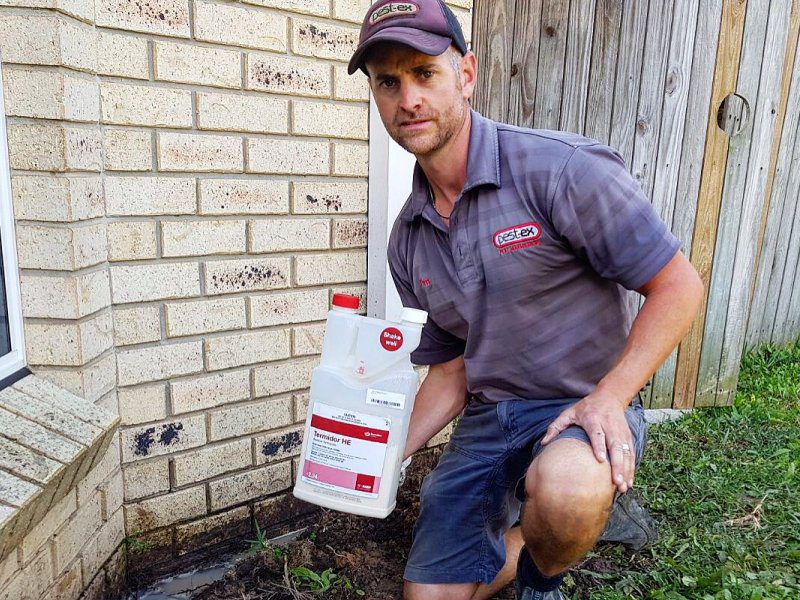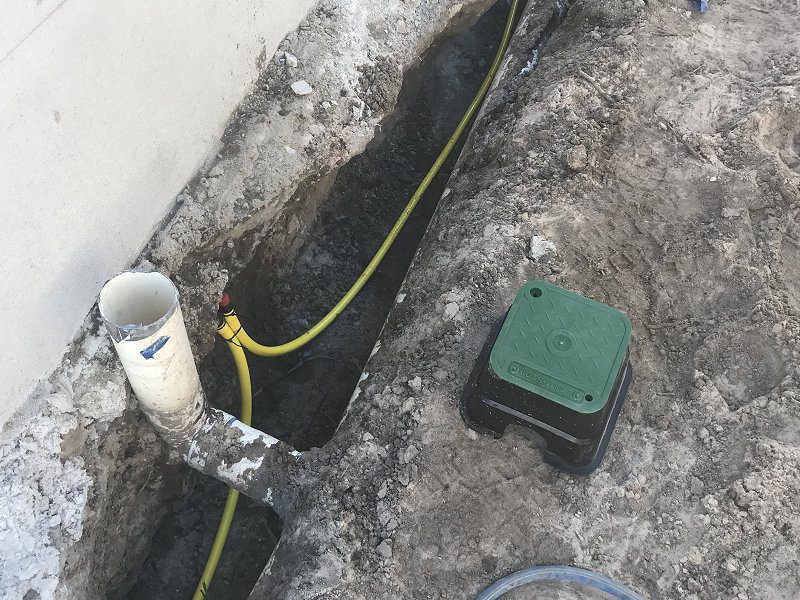
Australian operated

Australian operated
Free on-site visit & quote
Over 14,000+ homes protected
5/5 stars is most frequent rating
A termite reticulation system is a series of underground pipes installed around the perimeter of a home. These systems provide ongoing termite protection by allowing termiticide to be replenished easily through specialised pest control equipment.
One of the key benefits is that the system can be topped up without drilling through concrete—provided there’s clear access to the soil. This makes it a popular choice for homes with established landscaping or finished slabs.
A reticulated termite system can be installed during new home construction or added during renovations, such as extensions or granny flats. In fact, it’s often a requirement when pouring a new concrete slab next to an existing one.
To comply with Australian Standards, a replenishable termite barrier must be installed where the old and new foundations meet. In this situation, we lay a termite barrier pipe beneath the slab and connect it to allow for regular re-filling. When we replenish the system, termiticide is pumped at a specific pressure to form a consistent termite treated zone around the structure.
If a homeowner has an existing intact reticulation system, it should be replenished with a non-repellent termiticide approved by the APVMA, such as Termidor.

One of the most common issues we encounter is when homeowners try to replenish older reticulation system termite barriers. Unfortunately, many older systems were installed with bifenthrin, a cheap repellent chemical that only deters termites. The problem with repellents is that termites simply go around or under them.
When we’re called in to maintain or upgrade a system, we only use non-repellent products like Termidor, which are designed to eliminate termites rather than just deter them.
The reality is that 60 to 70% of termite reticulation system fail during pump-ups. Pipes become brittle after years underground, and many original installers have gone out of business. We often find poorly installed systems with plastic bends that break under pressure. If we attempt to pump 400 litres around a home and the system fails, the chemical only reaches a single section, exposing the rest of the house.

Our technicians are trained to inspect every corner of a reticulation pest control system before and during a pump-up. If we detect flooding or backflow in any area, we don’t continue. Instead, we recommend installing a new, reliable anti termite reticulation system for proper, long-term protection.
For example, we were recently called for a termite inspection and reticulation job. Upon testing the soil, we found that the chemical had only reached one corner of the house. Without thorough testing, the homeowner would have wrongly assumed their home was protected.
In most cases, a building contractor will brief a termite protection company that specialises in pre-construction to install the system. What concerns us is that these companies don’t need a full termite license to install the line. This means they could have done a short course on how to install the line and could be using inferior products.
The builders are also unaware of how the systems work, and play a role in them failing. We’ve come across sites where the pipes have been covered with rubble or rocks, so the chemical can’t disperse. Another issue can come in with broken lines. The hose has an L-shaped bend, which is used when it needs to curve around a house. They are secured with black clips. If the clips break, the lines pop off. To avoid this, we’ve seen cases where installers have used hose clamps instead. The problem is when the pipes become brittle, the clamps cause them to bend and break underground.

Reticulation systems aren’t commonly being installed anymore, but we regularly get called to replenish them. One of the new systems we use now is Termex. There’s no need to use the plastic bends anymore because the lengths are in 10 metres, and have a junction box on every end of the line. There’s no risk of busting a corner or an end because when we pump up a line, both ends of the line are visible through the junction boxes.
The cost of installing or replenishing a termite reticulation system can vary depending on several important factors. While we don’t list set prices here, understanding what influences pricing can help you make informed decisions.
Installation Factors
When setting up a new anti termite reticulation system, a few things can affect the cost:
Properties with limited access or complex construction may require more labour and materials.
Replenishment Considerations
If you already have a reticulated termite system, the condition of the system plays a big role in determining service needs. Key factors include:
In some cases, older systems may need to be replaced entirely if they’re damaged, clogged, or installed incorrectly.
Long-Term Value
While upfront costs may vary, a properly installed and maintained termite reticulation system can save homeowners from significant damage repair bills. Investing in quality installation and the right products ensures your home stays protected for the long term.
If you’re about to perform extensive renovations or your reticulation system hasn’t been looked at in some time, be sure to get in touch. We’ll arrange a time to come out and take a look at it for you.







